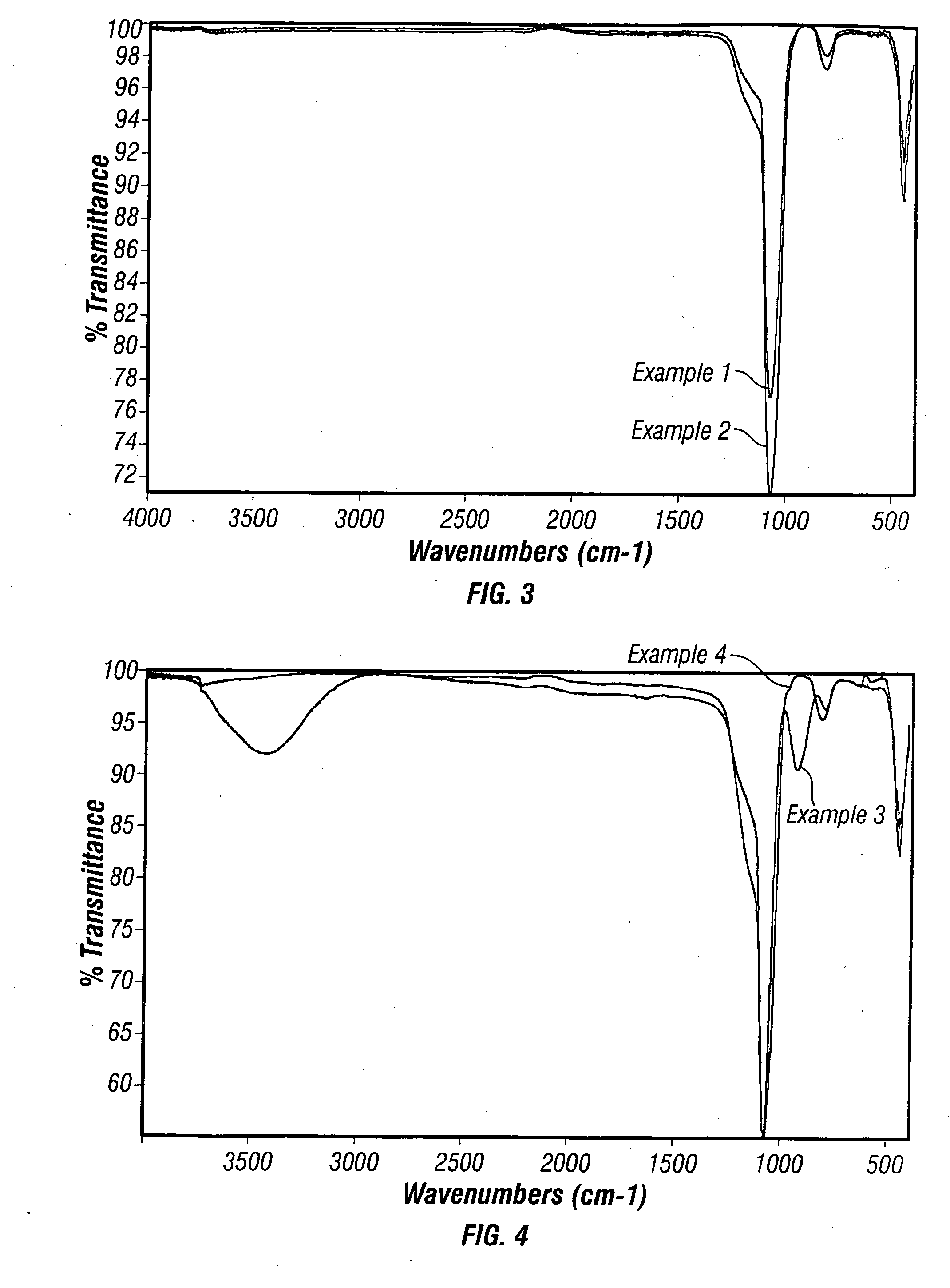Apparatus, precursors and deposition methods for silicon-containing materials
a technology of silicon-containing materials and precursors, applied in the direction of liquid/solution decomposition chemical coating, superimposed coating process, resistive material coating, etc., can solve the problems of rc delay becoming the dominant factor, and the problem of integrating polymeric porous materials into semiconductor device manufacturing flows
- Summary
- Abstract
- Description
- Claims
- Application Information
AI Technical Summary
Problems solved by technology
Method used
Image
Examples
examples
[0084] Depositions described in the Examples below were carried out using a deposition system of the general design illustrated in FIG. 2. The system was cleaned and thoroughly dried using heating and pumping overnight under vacuum (diffusion pump, nominal vacuum 10−5 Torr) using a cold trap (liquid nitrogen, about −196° C.) prior to deposition. During deposition, the precursor was fed by unimpeded direct vapor draw at the nominal pressure applied by the diffusion pump, the temperature in the hot zone was about 725° C., and the cold trap was maintained at about −196° C., unless otherwise stated. Si-precursor, porogen, substrate temperature, and annealing conditions were varied as described below.
examples 1-2
[0085] Two Si-containing films were deposited using bis-tertiarybutoxy dichlorosilane of the formula (IV). No porogen was used. The substrate temperature was about 0° C. By-product Cl—C(CH3)3 was isolated from the cold trap, indicating that SiOx* was formed and subsequently polymerized to form the Si-containing film (comprising —(SiO2)— recurring units) in a manner similar to that illustrated in Scheme (A) for bis-tertiarybutoxy dibromosilane. After deposition, both films were exposed to air for several days. The films were then thermally annealed at 420° C. for one hour under either air (Example 1) or nitrogen (Example 2). The resulting Si-containing films were characterized by infrared spectroscopy (FTIR) as shown in FIG. 3. The FTIR spectra shown in FIG. 3 confirm that the deposited film was a three-dimensional network of silicon and oxygen atoms comprising —(SiO2)— recurring units.
examples 3-4
[0086] A Si-containing film was deposited using bis-tertiarybutoxy dibromosilane of the formula (III). No porogen was used. The substrate temperature was about 0° C. By-product Br—C(CH3)3 was isolated from the cold trap, indicating that SiOx* was formed and subsequently polymerized to form the Si-containing film (comprising —(SiO2)— recurring units as illustrated in Scheme (A)). The resulting Si-containing film was characterized by FTIR before annealing (Example 3) and after annealing at 400° C. for one hour under vacuum (Example 4) as shown in FIG. 4. The FTIR spectra shown in FIG. 4 confirm that both of the films were three-dimensional networks of silicon and oxygen atoms comprising —(SiO2)— recurring units. The spectra also show that the as-deposited film (Example 3) contained Si—OH bonds after exposure to air as indicated by the Si—OH stretching-bending mode observed near 925 cm−1, and that annealing under vacuum (Example 4) changed the structure of the film by reducing the amou...
PUM
| Property | Measurement | Unit |
|---|---|---|
| Temperature | aaaaa | aaaaa |
| Temperature | aaaaa | aaaaa |
| Temperature | aaaaa | aaaaa |
Abstract
Description
Claims
Application Information
 Login to View More
Login to View More - R&D
- Intellectual Property
- Life Sciences
- Materials
- Tech Scout
- Unparalleled Data Quality
- Higher Quality Content
- 60% Fewer Hallucinations
Browse by: Latest US Patents, China's latest patents, Technical Efficacy Thesaurus, Application Domain, Technology Topic, Popular Technical Reports.
© 2025 PatSnap. All rights reserved.Legal|Privacy policy|Modern Slavery Act Transparency Statement|Sitemap|About US| Contact US: help@patsnap.com



